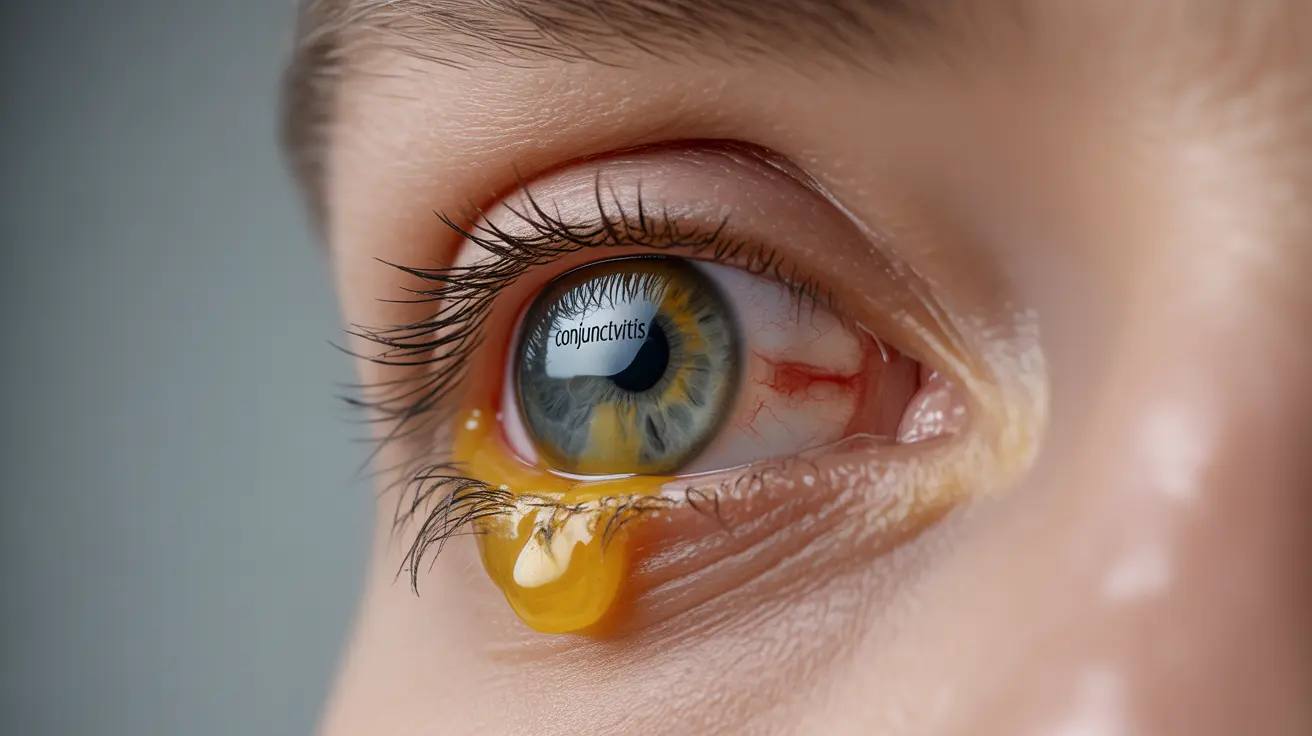When you develop a cold, you might notice an unusual yellow discharge from your eyes alongside typical cold symptoms. This uncomfortable condition, often related to viral conjunctivitis or "pink eye," can cause concern and discomfort. Understanding the causes, symptoms, and proper treatment approaches is essential for managing this common condition effectively.
Yellow eye discharge during a cold typically indicates your body's immune response to infection, but determining whether it's viral or bacterial is crucial for proper treatment. Let's explore everything you need to know about managing yellow eye discharge when you have a cold.
Understanding the Connection Between Colds and Eye Discharge
When you catch a cold virus, it can affect not only your respiratory system but also your eyes. The same virus causing your cold symptoms can spread to your conjunctiva – the clear membrane covering your eye and inner eyelid – leading to inflammation and discharge.
The yellow discharge typically occurs because your immune system is fighting the infection, producing extra mucus and inflammatory cells that appear as yellowish secretions.
Types of Eye Discharge and Their Meanings
Viral Conjunctivitis
Most commonly associated with colds, viral conjunctivitis typically produces a watery to slightly yellow discharge. The discharge tends to be thinner and may be accompanied by:
- Redness in one or both eyes
- Watery eyes
- Mild irritation or burning sensation
- Light sensitivity
Bacterial Conjunctivitis
While less common during a cold, bacterial infection can produce:
- Thick, yellow-green discharge
- Heavy crusting, especially in the morning
- More severe redness and irritation
- Discharge that returns quickly after wiping
Treatment Options for Yellow Eye Discharge
Home Care Methods
Several home remedies can help manage yellow eye discharge during a cold:
- Clean eyes gently with warm water and clean cotton balls
- Apply warm compresses to reduce discomfort
- Keep hands clean and avoid touching eyes
- Use artificial tears for comfort
- Remove contact lenses until symptoms resolve
Medical Interventions
Professional medical treatment may be necessary if:
- Symptoms persist beyond 7-10 days
- Vision becomes affected
- Pain becomes severe
- Discharge significantly increases or changes color
Prevention and Hygiene Measures
To prevent spreading the infection and manage symptoms:
- Wash hands frequently with soap and water
- Use separate towels and washcloths
- Avoid sharing eye makeup or contact lens supplies
- Replace eye makeup after infection clears
- Keep surfaces clean and disinfected
Frequently Asked Questions
What causes yellow eye discharge when I have a cold? Yellow eye discharge during a cold typically occurs when the virus affecting your respiratory system spreads to your eyes, causing inflammation and increased mucus production in the conjunctiva.
How can I tell the difference between viral and bacterial conjunctivitis with yellow discharge? Viral conjunctivitis usually produces thinner, watery to slightly yellow discharge and often affects both eyes. Bacterial conjunctivitis typically causes thicker, yellow-green discharge with heavy crusting and may initially affect one eye.
What home treatments help relieve yellow eye discharge caused by an eye cold? Effective home treatments include gentle cleaning with warm water, applying warm compresses, using artificial tears, and maintaining good hand hygiene. Avoid touching or rubbing your eyes.
When should I see a doctor for yellow eye discharge and cold symptoms? Seek medical attention if symptoms persist beyond 7-10 days, if you experience vision changes, severe pain, or if the discharge becomes extremely thick or changes color significantly.
How contagious is viral conjunctivitis with yellow eye discharge, and how can I prevent spreading it? Viral conjunctivitis is highly contagious and can spread through direct contact or contaminated surfaces. Prevent spreading by washing hands frequently, avoiding touching your eyes, using separate towels, and staying home from work or school until symptoms improve.




